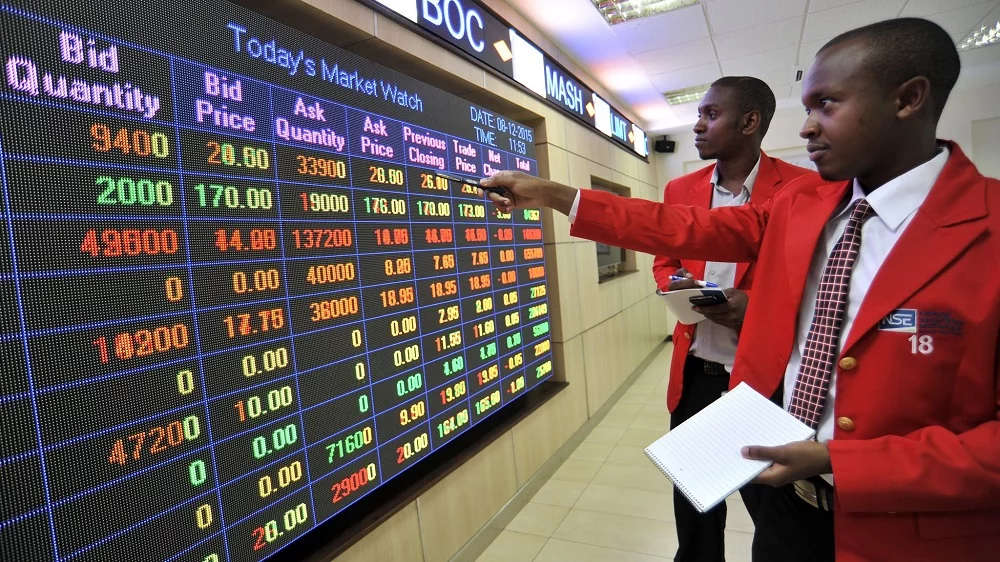Treasury Bill Rally Signals Renewed Market Confidence
Kenya’s shilling (KES) stabilizes near 147/USD as CBK reforms and IMF inflows rebuild confidence; local debt markets rally with 91-day yields at 15.7 percent, while fiscal consolidation narrows deficit to 3.9 percent of GDP.

Kenya’s financial markets have entered a rare phase of short-term stability after months of sustained volatility, as the shilling steadied and local debt markets rallied in early November 2025. The Kenyan shilling (KES), which had depreciated by nearly 24 percent over the past year, has held firm around KES 147 per US dollar, supported by a crucial mix of structural and policy-driven adjustments led by the Central Bank of Kenya (CBK).
This stabilization coincides with renewed investor confidence in domestic treasury bills, where yields on 91-day paper eased significantly to 15.7 percent, down from a peak of 17.1 percent in mid-2024. Together, these positive developments suggest that Nairobi’s recent financial reforms are finally beginning to restore macro credibility—though the underlying foundations remain notably fragile.
At the core of this turnaround is the CBK’s recalibrated foreign exchange management strategy. The central bank has moved decisively from aggressive intervention toward a managed float regime, a policy shift that allows for greater market determination of exchange rates while simultaneously focusing on rebuilding depleted reserves. Foreign exchange reserves now stand at US $7.5 billion, providing coverage for 3.8 months of import demand, up from a concerning 3.1 months in July.
This vital improvement partly reflects external inflows from the IMF’s Extended Fund Facility (EFF) program and rising remittances, which grew 9.4 percent year-on-year in the latest reported quarter. The IMF’s steady disbursements—projected to total US $3.6 billion by mid-2026—have effectively anchored confidence that Kenya’s external financing gap remains manageable and its debt restructuring commitments are on track.
Treasury bill demand has surged as local institutional investors, most notably pension funds and banks, actively rotate from riskier equities into high-yielding, short-term instruments. The oversubscription rate for the CBK’s weekly T-bill auctions averaged 137 percent in October, signaling both ample domestic liquidity and markedly reduced currency anxiety. The Nairobi Securities Exchange (NSE), however, continues to lag regional peers, with the benchmark NSE-20 Index (NSE:NSE20) up just 1.3 percent year-to-date.
This underperformance contrasts sharply with the 11 percent gain recorded for Nigeria’s NGX All-Share Index (NGX:NGSEINDEX) and the 9 percent rise for South Africa’s JSE All Share (JALSH:JNB). This significant divergence reflects persistent market concerns over Kenya’s corporate earnings outlook amid elevated borrowing costs and sustained subdued household demand.
Fiscal dynamics are central to Kenya’s macro story and future stability. The National Treasury’s robust fiscal consolidation drive has narrowed the primary deficit to 3.9 percent of GDP, a substantial achievement down from 5.7 percent a year earlier. This tangible progress has come through disciplined expenditure restraint and enhanced revenue collection, particularly from digital services and excise taxes.
Yet debt-service obligations—projected at a high 62 percent of total revenues in FY2025—continue to severely crowd out essential social and capital spending. Kenya’s total public debt, estimated at KES 11.1 trillion (about 69 percent of GDP), remains high, but the critical debt-maturity profile has improved following the partial buyback of its Eurobond 2027 (XS1843435840), successfully reducing near-term refinancing pressure.
Monetary conditions remain tight but credible, an essential combination for stability. Inflation eased to 5.8 percent year-on-year in October, effectively placing it within the CBK’s 5 percent target band (plus or minus 2.5 percent), primarily driven by lower food and energy prices. This successful containment gives the CBK necessary space to maintain its policy rate at 13 percent into early 2026 while continuing to prioritize currency stability. Real interest rates have turned marginally positive, a factor helping to attract carry-trade inflows and stabilize portfolio flows. The interbank rate, averaging 13.4 percent, indicates balanced liquidity after the acute cash rationing of mid-year.
However, deep structural vulnerabilities persist and demand attention. Kenya’s current account deficit remains at 4.3 percent of GDP, reflecting a high import content in energy and manufacturing. Export diversification beyond the traditional pillars of tea, horticulture, and tourism remains disappointingly limited. High power tariffs, logistical bottlenecks, and regulatory opacity continue to weigh heavily on overall competitiveness. Moreover, private-sector credit growth has slowed to 8.7 percent, running below the 12 percent nominal GDP expansion, indicating severely constrained financial intermediation that is crucial for sustained, broad-based economic growth.
The broader policy narrative points toward gradual normalization rather than immediate exuberance. The CBK’s credibility, significantly reinforced under Governor Kamau Thugge’s tenure, has helped reset market expectations, but long-term sustainability will critically hinge on sustaining fiscal discipline and accelerating structural reforms.
The Treasury’s upcoming medium-term debt strategy will test whether Kenya can shift decisively from external reliance to domestic financing without triggering harmful crowding-out effects on private investment. In market terms, the short end of the yield curve could continue to compress as inflation expectations ease, but long-term yields will likely remain sticky near 16 percent, reflecting lingering fiscal risk premiums.
The shilling, meanwhile, is expected to trade within a KES 145–150 range through early 2026, provided global dollar strength does not reassert itself. Investors seeking local exposure may find opportunities in infrastructure-linked bonds and digital-finance equities, contingent on consistent policy delivery. Kenya’s stabilization, then, is less a genuine turning point than a precious reprieve—a window to consolidate reforms and rebuild profound trust in domestic markets. The next twelve months will reveal whether policy coherence can turn this fragile calm into a sustainable macro recovery.





